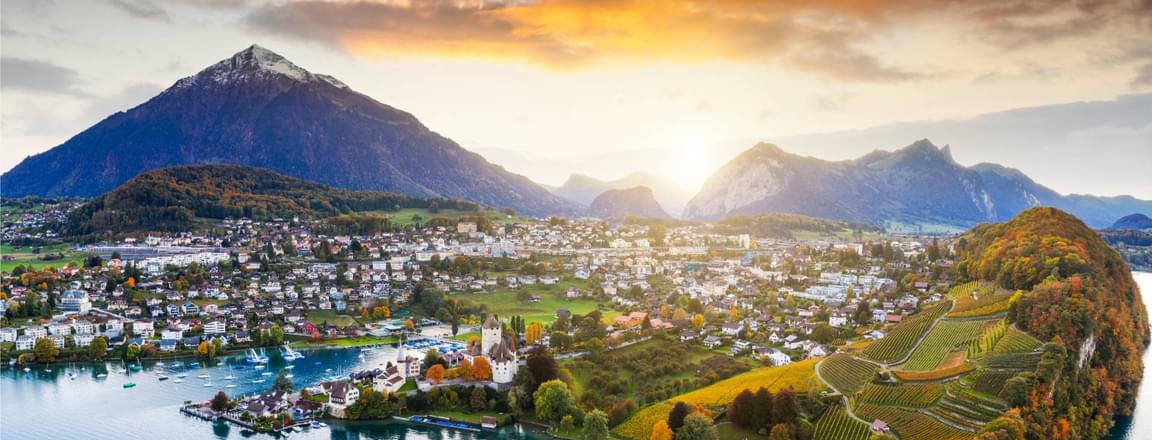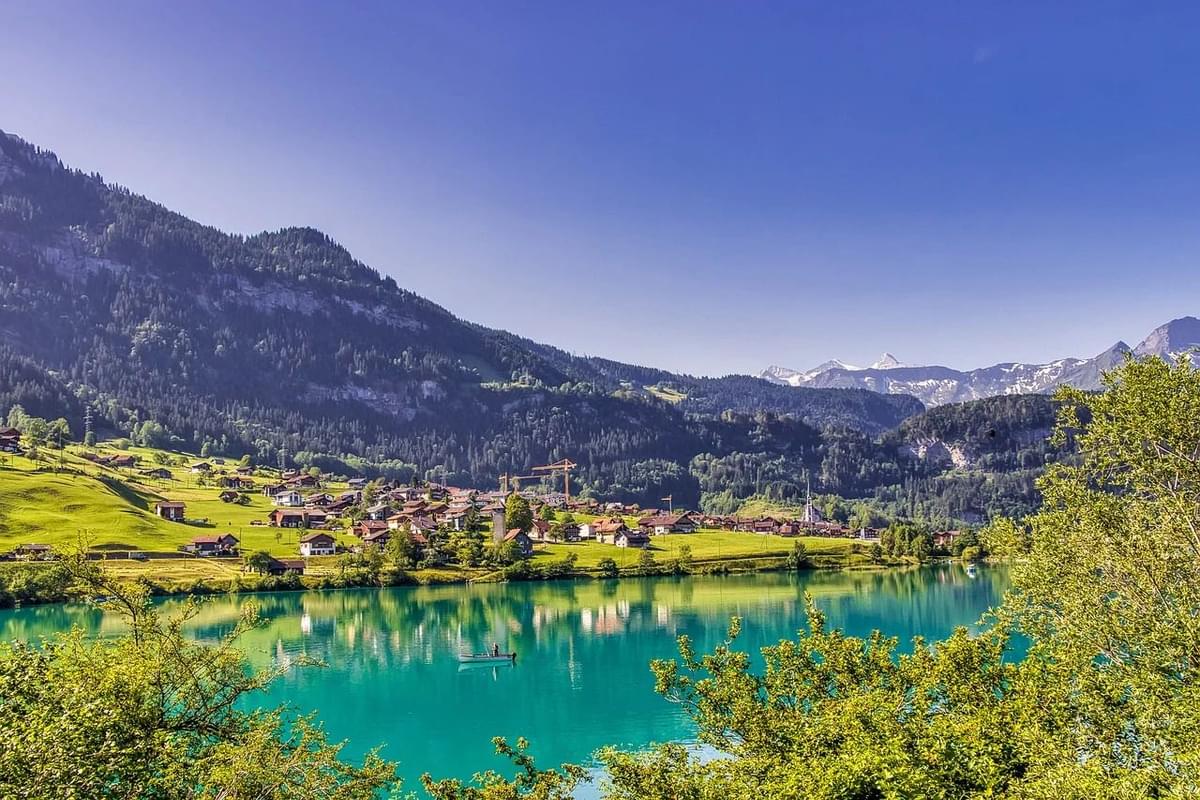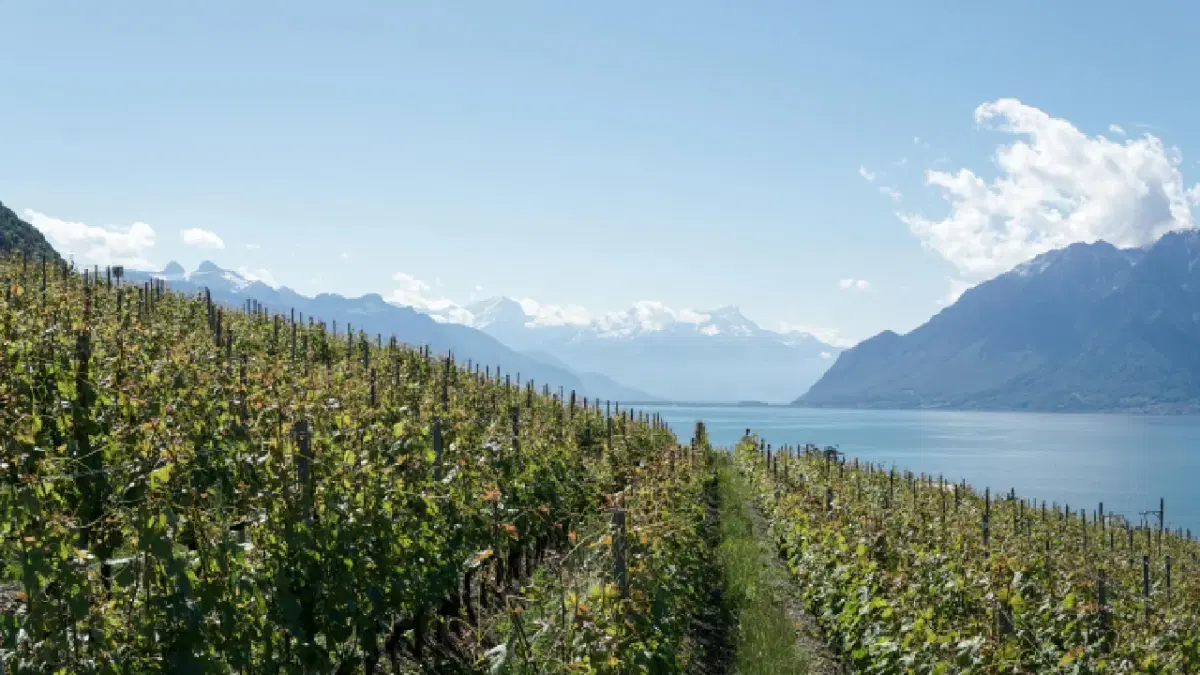
- Home
- Tourism
- Switzerland
- Best Time to Visit Switzerland
Best Time to Visit Switzerland

The best time to visit Switzerland is based on the experiences you desire. Be it skiing in the Alps, hiking scenic trails, or enjoying serene lakes, Switzerland's tourism has year-round attractions that suit your preferences and budget. Switzerland has four distinct seasons, each offering unique experiences. Summer (June-August) offers warm weather and outdoor fun, while winter (December-February) brings snowy alpine adventures. Spring (March -May) and autumn (September-November ) are the seasons with mild weather conditions, fewer tourists and beautiful scenery. This guide will help you find the Switzerland travel tips.
Key Takeaways
- Best months to visit Switzerland: May, June, September, and October, ideal weather, manageable crowds, and moderate prices.
- Winter months (December to February) are perfect for skiing, snowboarding, and winter sports.
- The shoulder seasons (spring and fall) also provide incentives for accommodation and the less busy attractions.
- Each season has advantages, thus choose the period of travel with respect to activities, climate, and expense.
Switzerland Weather Guide: Seasons, Temperatures & Rainfall

Switzerland’s weather is vastly different according to the region, altitude and even season. There are four distinct seasons due to its central European location and Alpine topography. Here’s a quick overview:
Month / Season | Temperature Range | Rainfall | Best For |
| March - May (Spring) | 10°C - 20°C | Moderate | Hiking, lakes, scenic train journeys |
| June - August (Summer) | 18°C - 28°C | Low-Moderate | Outdoor adventures, city tours, festivals |
| September - November (Autumn) | 10°C - 22°C | Moderate | Scenic drives, fall foliage, fewer crowds |
| December - February (Winter) | -2°C - 7°C | Snowfall | Skiing, snow sports, Christmas markets |
Summer in Switzerland : Best Outdoor Activities, Weather & Events
Summer in Switzerland is the peak season, which spans from June to August. It provides a good climate, sunny weather and conditions for enjoying outdoor activities in Switzerland. During the summer, the mountain resorts in Switzerland go up by 50% more than the rest of the seasons, and the destinations are full to the brim.
Weather Conditions:
Summer temperatures range between 18 °C to 28 °C in low altitudes, with July and August recording the highest temperatures. The humidity is very low, and the general weather is clear, which makes it great for hiking, sightseeing and doing other activities in the lake.
Activities & Highlights in Summer:

- Hiking & Mountain Adventures: June through August can give the best opportunity to hike in higher altitude trails, and May through September is the best month as a whole to explore the hiking trails. Hike in the Swiss Alps, Jungfrau, or Zermatt to see the panoramas of the mountain.
- Lake Activities: Summer is made in the ideal time for swimming, paddleboarding and water sports among the clear lakes in Switzerland. Lake Geneva, Lake Lucerne, and Lake Zürich become popular summer destinations in Switzerland for cooling off.
- Festivals & Events: Major events include the Montreux Jazz Festival (July), Paléo Festival in Nyon (late July), and Swiss National Day celebrations on August 1st demonstrate the lively Swiss culture.
- Scenic Train Journeys: The Glacier Express, the Bernina Express, and the GoldenPass tracks run at full capacity with the best possible view of the Alpine views.
Tips: Book accommodation and train passes 2–3 months in advance, especially in popular alpine destinations.
Switzerland Shoulder Seasons
Shoulder seasons in Switzerland begin in March to May and September to November, offering affordably priced travel and agreeable weather, and reduced congestion in such cities as Zurich and Lucerne.
Spring (April-June)
April is the beginning of the shoulder season, with temperatures between 15-19 °C. At the lower elevations where there is melting snow, the green valleys and the wildflowers are blooming. The big cities, such as Zurich, have hotels that give discounts to the range of 20-40 % during the spring.
Activities & Highlights:
- Wildflower blooms across Alpine meadows
- Tulip Festival in Morges along Lake Geneva (March-May)
- Lower hiking trails become accessible
- Bern Grand Prix attracts over 30,000 runners through the capital
Autumn (September-October)
September in Switzerland is the Autumn season, and it is fairly warm with less but sufficient daylight. Temperatures range from 14 °C to 24 °C in cities such as Zurich. Autumn is the cheapest time to go to Switzerland, with lower-priced accommodations with fewer crowds. The weather remains warm enough for most summer activities except swimming.
Activities & Highlights:

- Alpine cattle descents (Alpabfahrt) occur throughout September-October, particularly festive in Appenzell.
- Grape harvest celebrations across wine regions
- Fall foliage transforms mountainsides into colourful displays
- Wine harvests happen during this period, offering the best wine experiences
Winter in Switzerland (December–February): Skiing, Snow Fun & Christmas Markets
Switzerland winters extend between December and February, with the average temperature ranging between -2 to 7 °C, with little sunlight in a day. The season is split into two periods, one being the low-cost early winter and the high-end skiing season. January is the best month to visit Switzerland in 2026 for skiing, snowboarding, and cosy alpine retreats.
Weather Conditions:
January and February are freezing periods in the Central Plateau, and the Alps/Jura mountains experience heavy snowfall. Large Swiss winter sports areas have almost 100% snow coverage between December and April. Cities such as Zurich or Geneva are chilly but almost snowless, whereas the Alps are ideal locations for winter sports activities.
Why Visit in Winter:

- Skiing & Snowboarding: Top resorts include St. Moritz, Verbier, and Zermatt.
- Christmas Markets: Explore festive markets in Lucerne, Zurich, and Basel.
- Winter Hiking & Snowshoeing: Trails are accessible for scenic winter landscapes.
Switzerland Month-by-Month Travel Guide: Temperature, Weather & Best Activities
Month | Temperature | Conditions | Ideal Activities |
| January | -2°C to 7°C | Coldest month, heavy snow | Skiing, winter sports |
| February | -1°C to 8°C | Cold with excellent snow | Skiing, carnival festivals |
| March | 2°C to 12°C | Early spring, snow at altitude | Skiing, spring hiking starts |
| April | 5°C to 15°C | Shoulder season begins | Wildflowers, lower trail hiking |
| May | 9°C to 19°C | Pleasant spring weather | Hiking, cycling, and lake activities |
| June | 13°C to 22°C | Early summer warmth | Mountain hiking, festivals begin |
| July | 15°C to 25°C | Peak summer heat | All activities, major festivals |
| August | 15°C to 25°C | Warmest month | Swimming, hiking, Swiss National Day |
| September | 11°C to 20°C | Beautiful autumn start | Hiking, wine harvest, cattle descents |
| October | 7°C to 14°C | Cooler, fall colours | Scenic drives, city exploration |
| November | 2°C to 8°C | Pre-winter, budget season | Museums, thermal baths, deals |
| December | -1°C to 5°C | Winter arrives, Christmas magic | Christmas markets, early skiing |
Switzerland Climate by Region: North, South, Central & Alpine Zones
Northern Switzerland (Zurich, Basel, Lucerne)
Most of Switzerland sits on the Alps' northern side, experiencing lower temperatures than southern regions. Regular rain patterns are recorded in these regions around the year.
Central Switzerland (Interlaken, Bern)
The precipitation observed increases in central locations in Switzerland because of the elevation level and closeness to the mountains. Morning mist and afternoon showers occur even during the dry season.
Southern Switzerland (Ticino, Lugano)
Ticino has the warmest conditions with a Mediterranean-influenced climate that supports palm trees in the nearby area of Lago Maggiore. Winters in this area are lower, and summers are warmer compared to the north.
Alpine Regions (Zermatt, St. Moritz, Verbier)
The weather in the Swiss Alps is very unpredictable because of the differences in landscape, change in elevation and change of air masses. June cold spells may bring snows, and winter may have fairly allowable sunny moments. There are dry pockets found in the mountains, such as Davos and Zermatt, ideal for skiing in Switzerland.
How to Plan Your Switzerland Trip: Best Time for Hiking, Skiing & Sightseeing
Best Time for Specific Activities
- Hiking: June to September, hiking Enthusiasts offer the best trail conditions. The season of May to September is the ideal hiking vacations when to travel.
- Skiing- Snowboarding: December- April ensures that there is a lot of snow cover in the great winter sports locales.
- Photography: September-October gives marvellous fall colours. Winter provides dramatic snow-covered landscapes.
- Budget Travellers: November-March and shoulder seasons (April-May, September-October) offer the most affordable rates.
What to Pack for Switzerland: Seasonal Packing List for Travellers
- Summer: Light layers, sunglasses, sunblock, comfortable walking shoes.
- Winter: Heavy jackets, gloves, scarves, snow boots, and thermal layers.
- Spring/Autumn: Layered clothing, waterproof jacket, sturdy shoes for hiking.
How to Travel Switzerland on a Budget: Best Time to Save on Hotels & Attractions
- Swiss Travel Pass: Purchase multi-day passes covering trains, buses, and boats, plus museum entries
- Early Booking: Booking 11 months ahead captures the best airfare and hotel deals before rates climb
- Shoulder Season Travel: Mid-range hotels average CHF 150-200 per night during shoulder seasons versus higher summer rates
- Local Dining: Select local restaurants/ supermarkets instead of tourist restaurants.
- Free actions: Numerous mountain paths, lake beaches and cliffs are free to explore.
Conclusion: When Is the Best Time to Visit Switzerland?
Switzerland welcomes visitors year-round, with each season offering distinct advantages. The shoulder seasons from March to May and September to November provide the sweet spot with moderately priced travel, pleasant sightseeing weather, and fewer crowds. The ideal travel window depends on personal priorities: weather preferences, budget constraints, desired activities, and crowd tolerance. Customise your next Switzerland tour packages with Pickyourtrail for a seamless experience.
FAQs
What should I pack for Switzerland in winter?
Pack heavy jackets, thermal layers, gloves, scarves, and snow boots. Waterproof gear is essential for skiing or hiking in the snow.
Is Switzerland safe to visit during winter?
Yes, Switzerland is safe year-round. Roads and ski areas are well-maintained, though mountain weather can change quickly.
What is the cheapest time to visit Switzerland?
The most budget-friendly months are March–May (spring) and October–November (late autumn), with lower accommodation prices and fewer crowds.
When does it snow in Switzerland?
Snowfall typically begins in late November in the Alps and continues through March, peaking in January and February.
Is Switzerland expensive?
Yes, Switzerland remains one of the most expensive travel destinations in Europe. However, travelling in off-peak months, using a Swiss Travel Pass, dining locally, and booking accommodation in advance can help manage costs.
Where is the warmest place in Switzerland?
Ticino, especially cities like Lugano and Locarno near the Italian border, is the warmest region in Switzerland, enjoying a mild Mediterranean climate with palm trees and sunny weather even in winter.
Update your location?



